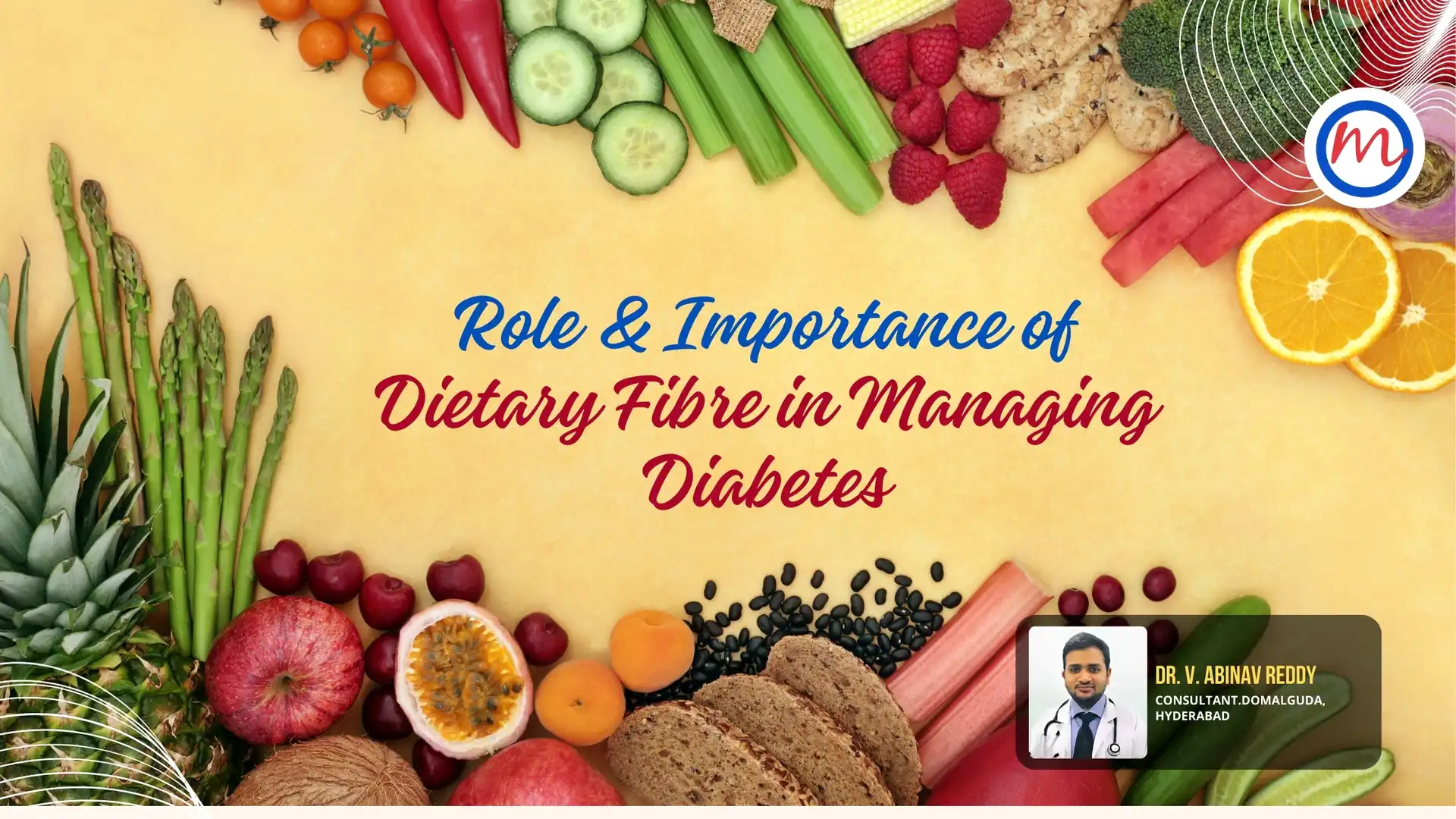Role & Importance of Dietary Fibre in Managing Diabetes
Understanding the Importance of Dietary Fibre in Diabetes Management
Diabetes is a chronic health condition that affects millions of individuals worldwide. It is primarily characterised by elevated blood sugar levels due to insufficient insulin production or poor insulin sensitivity. Effective diabetes management often requires a combination of medication, physical activity, and most importantly, dietary changes. One essential component of a diabetes-friendly diet is dietary fibre.
Fibre-rich foods are known to regulate blood sugar levels, support heart health, and aid in weight management—three crucial aspects of diabetes control.
What is Dietary Fibre?
Dietary fibre refers to the indigestible part of plant-based foods. Unlike other carbohydrates, fibre is not broken down into sugar and absorbed by the body. As a result, it doesn’t raise blood glucose levels, making it especially beneficial for individuals with diabetes.
There are two main types of dietary fibre:
- Soluble Fibre: Dissolves in water to form a gel-like substance. It helps lower blood cholesterol and glucose levels. Good sources include oats, lentils, beans, apples, and citrus fruits.
- Insoluble Fibre: Does not dissolve in water and adds bulk to the stool, promoting regular bowel movements. Found in whole grains, nuts, seeds, and vegetables.
Benefits of Dietary Fibre for People with Diabetes
Incorporating adequate fibre into the daily diet offers multiple health benefits for those managing diabetes:
- Improves Blood Sugar Control
Fibre slows the absorption of sugar into the bloodstream, helping to prevent rapid spikes in blood glucose levels. This is particularly helpful for individuals with type 2 diabetes.
- Enhances Heart Health
People with diabetes are at a higher risk of heart disease. Soluble fibre can reduce LDL (bad) cholesterol levels, supporting cardiovascular health.
- Boosts Insulin Sensitivity
High-fibre diets can improve how the body responds to insulin, allowing better glucose utilisation and reducing insulin resistance.
- Supports Weight Management
Fibre-rich foods are more filling, helping control appetite and reduce calorie intake. Maintaining a healthy weight is crucial for managing type 2 diabetes.
- Promotes Digestive Health
Fibre helps prevent constipation and improves overall gut health, issues that are often common among people with diabetes.
High-Fibre Foods for Diabetes Management
To reap the full benefits of dietary fibre, consider incorporating these fibre-rich foods into your daily meals:
- Whole Grains: Brown rice, whole wheat, oats, barley, quinoa
- Fruits & Vegetables: Apples, berries, oranges, carrots, broccoli, spinach
- Legumes: Chickpeas, kidney beans, black beans, lentils
- Nuts & Seeds: Almonds, walnuts, flaxseeds, chia seeds
- Fibre Supplements: If dietary intake is insufficient, fibre supplements (psyllium husk, inulin, etc.) may be considered with a healthcare provider’s advice
Practical Tips to Increase Fibre Intake
- Start Slowly: Gradually increase your fibre consumption to avoid bloating or gas.
- Stay Hydrated: Drinking enough water helps fibre work efficiently in your digestive system.
- Read Nutrition Labels: Choose packaged foods that are high in fibre.
- Choose Healthy Snacks: Opt for fruits, nuts, and whole-grain options.
- Plan Balanced Meals: Include a variety of high-fibre foods in every meal.
Conclusion
Dietary fibre plays a vital role in managing diabetes by helping control blood sugar levels, supporting heart health, enhancing insulin sensitivity, and improving digestive health. A balanced, fibre-rich diet can make a significant difference in overall diabetes management and quality of life.
By making informed food choices and gradually increasing fibre intake, individuals with diabetes can better manage their condition and reduce the risk of complications.



